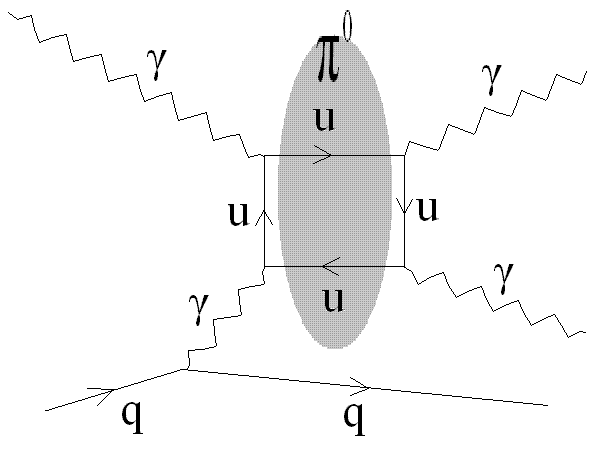
Primakoff effect
Encyclopedia

Pseudoscalar
In physics, a pseudoscalar is a quantity that behaves like a scalar, except that it changes sign under a parity inversion such as improper rotations while a true scalar does not.The prototypical example of a pseudoscalar is the scalar triple product...
meson
Meson
In particle physics, mesons are subatomic particles composed of one quark and one antiquark, bound together by the strong interaction. Because mesons are composed of sub-particles, they have a physical size, with a radius roughly one femtometer: 10−15 m, which is about the size of a proton...
s by high-energy photon
Photon
In physics, a photon is an elementary particle, the quantum of the electromagnetic interaction and the basic unit of light and all other forms of electromagnetic radiation. It is also the force carrier for the electromagnetic force...
s interacting with an atomic nucleus
Atomic nucleus
The nucleus is the very dense region consisting of protons and neutrons at the center of an atom. It was discovered in 1911, as a result of Ernest Rutherford's interpretation of the famous 1909 Rutherford experiment performed by Hans Geiger and Ernest Marsden, under the direction of Rutherford. The...
. It can be viewed as the reverse process of the decay of the meson into two photons.
Primakoff effect has been used for the measurement of the decay width of neutral mesons.
Primakoff effect also could take place in stars, and be a production mechanism of hypothetical particles, such as the axion
Axion
The axion is a hypothetical elementary particle postulated by the Peccei-Quinn theory in 1977 to resolve the strong CP problem in quantum chromodynamics...
.
The Primakoff effect is predicted to lead to optical properties of the vacuum state
Vacuum state
In quantum field theory, the vacuum state is the quantum state with the lowest possible energy. Generally, it contains no physical particles...
in the presence of a strong magnetic field.

